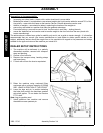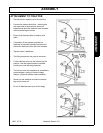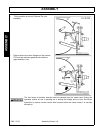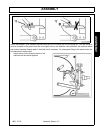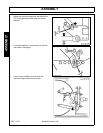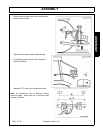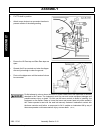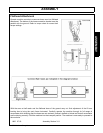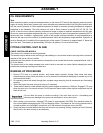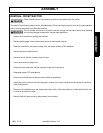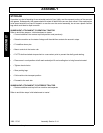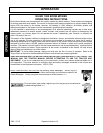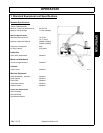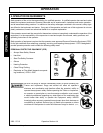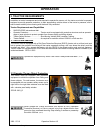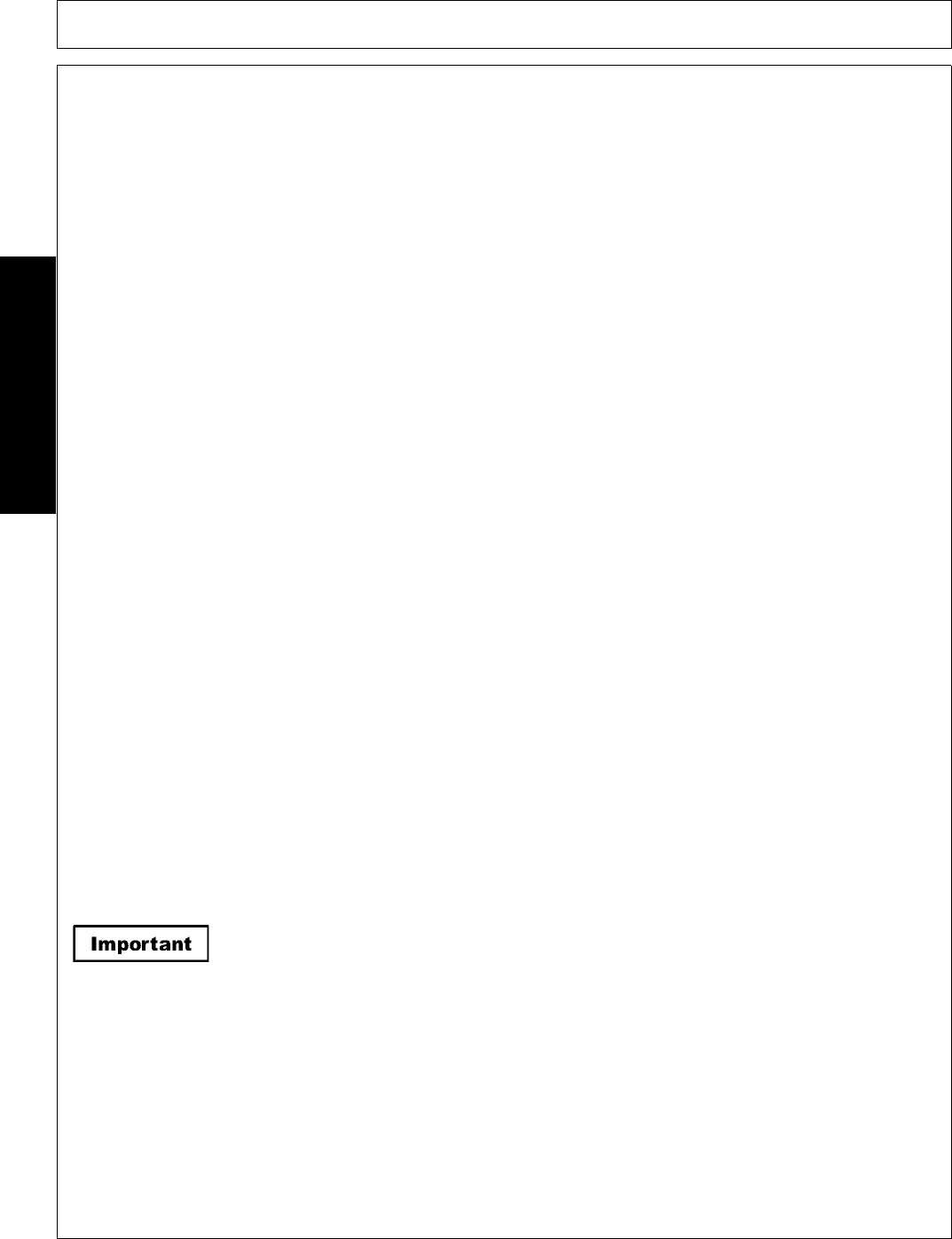
ASSEMBLY
1900 07/10 Assembly Section 3-12
© 2010 Alamo Group Inc.
ASSEMBLY
OIL REQUIREMENTS
Tank
Rear mounted hydraulic pumps are attached directly to the tractor PTO and will be operating when the tractor
engine is running. Never start a tractor with a rear mounted pump attached without first filling the hydraulic tank
with the correct hydraulic oil. Rhino specifies hydraulic oil based on ambient operating temperature ranges as
prescribed in iso standards. The most common oil used in Rhino mowers is the AW ISO VG 100 Oil. The
vg100 oil has the most optimal operating temperature range in regard to ambient temperatures but will also
survive as mower component temperatures rise. It is no uncommon to see oil temperatures exceeding 200º in
the summer time. In addition, a good quality vg100 oil will provide sufficient lubrication in cold temperatures to
allow low idle warm up of the machine to enable operation within the temperature range specified. Hydraulic oil
must be filtered prior to installing it the hydraulic tank of the mower. Fill reservoir to approximately 2” below the
top of the tank. The capacity is approximately 200 liters (44 gallons). Do not overfill the tank.
FITTING CONTROL UNIT IN CAB
CABLE CONTROLLED MODELS
The control unit is bolted to a mounting bracket.
This bracket may be bolted to the mud wing or cab cladding in a convenient location ensuring that no structural
member of the cab or roll bar is drilled.
In deciding the final position of the control box remember not to exceed the minimum acceptable bend -radii of
8"' for the cables.
The control lever for the cable operated rotor control valve is mounted in a similar fashion adopting the same
precautions pertaining to drilling and cable runs.
RUNNING UP PROCEDURE
1. Ensure P.T.O. lever is in neutral position, and isolate tractor hydraulic linkage. Start tractor and select
external service supply. Allow the tractor to run for several minutes before attempting to operate any of the
machine control levers.
2. On operating move the levers through their complete range ensuring that all movements are functioning
correctly.
3. Check the tractor rear axle oil level and top up if necessary.
4. Place the flail head at a safe attitude and bring tractor engine revolutions to 1000 rpm. Engage P.T.O. and
allow the rotor to run for several minutes. Do not leave the tractor cab or allow anyone to approach the flail
head at this time.
Do not allow the pump to continue working if the rotor does not turn. Overheating and
serious pump damage to the pump can be caused in a very short time.
5. After running up the machine, increase PTO speed to approximately 360 RPM. Run machine further for
five minutes before disengaging the PTO and stopping tractor. The reason for this running period under a
no load condition is to thoroughly circulate the oil in the reservoir through the return line filter.
6. Check the hose runs and observe that they are free from any pinching, chafing, straining or kinks. Recheck
the oil level in the tank and top up as necessary.



